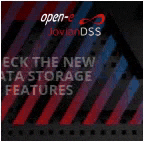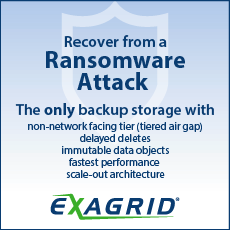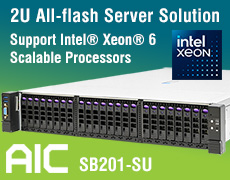NetApp Assigned Twenty Patents
Moving data between nodes in cluster, bridging clouds, gransets for managing consistency groups of dispersed storage items, de-duped host cache flush to remote storage, dynamic hashing in caching subsystems, using resources in networked computing environment, server fault analysis system using event logs, managing provisioning requests in networked storage environment, facilitating secure cloud compute environments, in-line policy management with multi-level object handle, sharing NVM SSD across cluster group, accelerating concurrent access to file in memory-based file, per-volume tenant encryption and external key manager, techniques for dynamically aligning partition with block size boundary, host side deduplication, availability storage access using quality of service, auto-expiring locks based on object stamping, log-structured file system, reconciliation in sync replication, multiple node repair using high rate minimum storage regeneration erasure code
By Francis Pelletier | December 26, 2019 at 2:05 pmMoving data between nodes in cluster
NetApp, Inc., Sunnyvale, CA, has been assigned a patent (10,484,472) developed by Nagasubramaniam, Balajee, Govind, Subin, Singh, Vijay, Sunnyvale, CA, and Prem, Jeff, Pittsburgh, PA, for “methods and systems for efficiently moving data between nodes in a cluster.“
The abstract of the patent published by the U.S. Patent and Trademark Office states: ”Exemplary embodiments provide methods, mediums, and systems for efficiently moving data between cluster nodes. Upon receiving a request to read or write data at a first cluster node that is in communication with a client, the first node effects the transfer to or from a second cluster node. The transfer is carried out using a combination of remote data memory access, (RDMA), or a similar technique that bypasses a part of the network stack, and transport control protocol, (TCP), or a similar technique that does not bypass a part of the network stack. The data is transferred using RDMA, while certain control messages are sent using TCP. By combining RDMA content transfers and TCP control messages, data transfers can be carried out faster, more efficiently, and with less processing overhead. Other embodiments are described and claimed.”
The patent application was filed on August 31, 2015 (14/840,512).
Bridging clouds
NetApp, Inc., Sunnyvale, CA, has been assigned a patent (10,484,471) developed by Fullbright, John Keith, Evans, GA, Beaupre, Mark, Los Gatos, CA, and Gates, Lee, Seatte, WA, for “bridging clouds.“
The abstract of the patent published by the U.S. Patent and Trademark Office states: ”Technology is disclosed for bridging clouds of computing devices for compute and data storage. The technology can receive a virtual routing table, (VRT), wherein the VRT indicates an association with a virtual local area network, (VLAN) and defines neighbors for each route wherein at least one neighbor is defined for each of the two different cloud service providers, wherein the route definition creates a private transitive network between the neighbors, receive from a first node a first message destined for a second node, determine that the first message employs the route specified by the VRT, forward the first message to the second node, receive from a third node a second message destined for the second node, determine that the second message does not employ the route specified by the VRT, and fail to forward the second message to the second node.”
The patent application was filed on May 11, 2015 (14/709,306).
Gransets for managing consistency groups of dispersed storage items
NetApp, Inc., Sunnyvale, CA, has been assigned a patent (10,482,066) developed by Shah, Devang Kundanlal, Roy, Dipankar, San Jose, CA, Budati, Krishnaveni, Fremont, CA, Tan, Kai, Patnaik, Pranab, Cary, NC, and Kaushik, Akhil, San Jose, CA, for “gransets for managing consistency groups of dispersed storage items.“
The abstract of the patent published by the U.S. Patent and Trademark Office states: ”One or more techniques and/or computing devices are provided for managing an arbitrary set of storage items using a granset. For example, a storage controller may host a plurality of storage items and/or logical unit numbers, (LUNs). A subset of the storage items are grouped into a consistency group. A granset is created for tracking, managing, and/or providing access to the storage items within the consistency group. For example, the granset comprises application programming interfaces, (APIs) and/or properties used to provide certain levels of access to the storage items, e.g., read access, write access, no access, redirect operations to access either data of an active file system or to a snapshot, fence certain operations, e.g., rename and delete operations, and/or other properties that apply to each storage item within the consistency group. Thus, the granset provides a persistent on-disk layout used to manage an arbitrary set of storage items.”
The patent application was filed on April 28, 2016 (15/140,992).
Deduplicated host cache flush to remote storage
NetApp, Inc., Sunnyvale, CA, has been assigned a patent (10,482,026) developed by Bk, Girish Kumar, and Makkar, Gaurav, Bangalore, India, for a “deduplicated host cache flush to remote storage.“
The abstract of the patent published by the U.S. Patent and Trademark Office states: ”In addition to caching I/O operations at a host, at least some data management can migrate to the host. With host side caching, data sharing or deduplication can be implemented with the cached writes before those writes are supplied to front end storage elements. When a host cache flush to distributed storage trigger is detected, the host deduplicates the cached writes. The host aggregates data based on the deduplication into a ‘change set file’, (i.e., a file that includes the aggregation of unique data from the cached writes). The host supplies the change set file to the distributed storage system. The host then sends commands to the distributed storage system. Each of the commands identifies a part of the change set file to be used for a target of the cached writes.”
The patent application was filed on November 17, 2017 (15/816,029).
Dynamic hashing in caching sub-systems
NetApp, Inc., Sunnyvale, CA, has been assigned a patent (10,481,835) developed by Banerjee, Arindam, Superior, CO, and Humlicek, Donald R., Wichita, KS, for “methods and systems for dynamic hashing in caching sub-systems.“
The abstract of the patent published by the U.S. Patent and Trademark Office states: ”Methods and systems for dynamic hashing in cache sub-systems are provided. The method includes analyzing a plurality of input/output, (I/O) requests for determining a pattern indicating if the I/O requests are random or sequential, and using the pattern for dynamically changing a first input to a second input for computing a hash index value by a hashing function that is used to index into a hashing data structure to look up a cache block to cache an I/O request to read or write data, where for random I/O requests, a segment size is the first input to a hashing function to compute a first hash index value and for sequential I/O requests, a stripe size is used as the second input for computing a second hash index value.”
The patent application was filed on October 9, 2014 (14/510,829).
Using resources in networked computing environment
NetApp, Inc., Sunnyvale, CA, has been assigned a patent (10,474,624) developed by Slik, David, Lasqueti Island, CA, for “systems and methods for using resources in a networked computing environment.“
The abstract of the patent published by the U.S. Patent and Trademark Office states: ”Methods and systems for a networked computing system are provided. One method includes generating, based on a first topology, a first proxy endpoint by a first device of a first pluggable compute module, establishing a communication tunnel between the first proxy endpoint and a non-volatile memory express, (NVMe) storage device for peer-to-peer communication between the first proxy endpoint of the first device and a controller of the NVMe storage device. An NVMe translation module receives a request for the NVMe storage device from the first proxy endpoint and the NVMe translation module translates the request to an NVMe request for the NVMe storage device for accessing storage space at the NVMe storage device. The method further includes de-allocating the first proxy endpoint, when the first topology is deactivated making the first pluggable compute module and the NVMe storage device available for a second topology.”
The patent application was filed on May 10, 2019 (16/409,692).
Server fault analysis system using event logs
NetApp, Inc., Sunnyvale, CA, has been assigned a patent (10,474,519) developed by Talwadker, Rukma Ameet, Bangalore, India, and Ackerman, Ross, Research Triangle Park, NC, for a “server fault analysis system using event logs.“
The abstract of the patent published by the U.S. Patent and Trademark Office states: ”A method and system for server fault analysis are described. A server configuration analyzer retrieves event logs collected from a server with a fault such as a misconfiguration. These event logs can then be analyzed using metrics to identify one or more messages in the logs that indicate a cause of the fault on the server. Once the messages are identified, the server configuration analyzer retrieves remedial commands that may be used to correct the fault from a database that stores remedial commands correlated with event log messages. The server configuration analyzer can then present the messages and remedial commands to a user to assist with identifying the cause of the fault and correcting it.”
The patent application was filed on September 17, 2015 (14/857,346).
Managing provisioning requests in networked storage environment
NetApp, Inc., Sunnyvale, CA, has been assigned a patent (10,469,582) developed by Dimnaku, Alma, Wellesley, MA, Hrischuk, Curtis, Holly Springs, NC, Hiregoudar, Abhishek, Boston, MA, and Rydeen, Michael James, Fremont, NH, for “methods and systems for managing provisioning requests in a networked storage environment.“
The abstract of the patent published by the U.S. Patent and Trademark Office states: ”Methods and systems for a networked storage system are provided. A provisioning engine assigns a plurality of performance parameters in response to a provisioning request for provisioning a workload for storing data in a networked storage environment, identifies a demand for a plurality of resources of the networked storage environment for meeting the provisioning request, transforms historical available performance capacity by filtering any historical performance capacity data related to any transient event, and identifies at least a resource pair that can meet the identified demand based on the transformed historical performance capacity data.”
The patent application was filed on April 13, 2016 (15/098,007).
Facilitating secure cloud compute environments
NetApp, Inc., Sunnyvale, CA, has been assigned a patent (10,469,272) developed by Slik, David, Northridge, CA, for “methods for facilitating secure cloud compute environments and devices thereof.“
The abstract of the patent published by the U.S. Patent and Trademark Office states: ”Methods, non-transitory computer readable media, and computing devices that facilitate secure cloud compute environments are disclosed. A secure application package, (SAP) is encrypted with an SAP encryption key. The encrypted SAP is stored on cloud storage. A profiling bitstream is sent to a cloud provider. The profiling bitstream is configured to, when implemented by the HLD, generate and return a profile response, including a bitstream encryption key, which is encrypted with a public key. The profile response is decrypted using a private key and the bitstream encryption key is extracted. An application bitstream is sent to the cloud provider. The application bitstream is encrypted with the bitstream encryption key, includes the SAP encryption key, and is configured to, when implemented by the HLD, obtain the SAP from the cloud storage, decrypt the SAP using the SAP encryption key, and execute an application in a softcore included in the application bitstream.”
The patent application was filed on July 28, 2017 (15/663,400).
In-line policy management with multi-level object handle
NetApp, Inc., Sunnyvale, CA, has been assigned a patent (10,467,188) developed by Goodson, Garth Richard, Fremont, CA, Pasupathy, Shankar, Sunnyvale, CA, Voruganti, Kaladhar, San Jose, CA, Kavuri, Ravi Kumar, San Ramon, CA, and Srinivasan, Sudhir, Acton, MA, for an “in-line policy management with multi-level object handle.“
The abstract of the patent published by the U.S. Patent and Trademark Office states: ”A distributed object store in a network storage system uses location-independent global object identifiers, (IDs) for stored data objects. The global object ID enables a data object to be seamlessly moved from one location to another without affecting clients of the storage system, i.e., ‘transparent migration’. The global object ID can be part of a multilevel object handle, which also can include a location ID indicating the specific location at which the data object is stored, and a policy ID identifying a set of data management policies associated with the data object. The policy ID may be associated with the data object by a client of the storage system, for example when the client creates the object, thus allowing ‘inline’ policy management. An object location subsystem, (OLS) can be used to locate an object when a client request does not contain a valid location ID for the object.”
The patent application was filed on November 22, 2016 (15/359,249).
Sharing NVM SSD across cluster group
NetApp, Inc., Sunnyvale, CA, has been assigned a patent (10,466,935) developed by Totolos, George, Cranberry Township, PA, Miller, Steve, Livermore, CA, and Hordijk, Michael, Steamboat Springs, CO, for “methods for sharing NVM SSD across a cluster group and devices thereof.“
The abstract of the patent published by the U.S. Patent and Trademark Office states: ”A method, non-transitory computer readable medium, and device that assists with sharing non-volatile memory solid state drives across a cluster group includes receiving a request for a block of storage in a non-volatile memory solid state drive in one of the plurality of non-volatile memory disk shelves. Information associated with each of a plurality of solid state drives in the plurality of non-volatile memory disk shelves associated with the received request is obtained. A namespace for each of the plurality of solid state drives in the plurality of non-volatile memory disk shelves using the obtained information is created. The requested block of storage in the non-volatile memory solid state drive associated with one of the created namespace is assigned to the requesting client computing device.”
The patent application was filed on June 21, 2017 (15/628,881).
Accelerating concurrent access to file in memory-based file
NetApp, Inc., Sunnyvale, CA, has been assigned a patent (10,466,922) developed by Golander, Amit, Tel Aviv, Israel, Manole, Sagi, Petah Tikva, Israel, and Harrosh, Boaz, Hertzlia, Israel, for an “accelerating concurrent access to a file in a memory-based file system.“
The abstract of the patent published by the U.S. Patent and Trademark Office states: ”A method, apparatus and product for accelerating concurrent access to a file in a memory-based file system. The method comprising receiving a request issued by a program, for accessing a file stored in a memory-based file system, and subject to the request being associated with data modification of data within the file, and subject to the modification not necessitating change in a structure of a data structure used for content lookup for the file, acquiring a lock to the file to the program, wherein the lock is acquired in a shared mode.”
The patent application was filed on March 30, 2016 (15/085,479).
Per-volume tenant encryption and external key manager
NetApp, Inc., Sunnyvale, CA, has been assigned a patent (10,460,124) developed by Wright, David D., Dacula, GA, and McCarthy, Daniel, Erie, CO, for “per-volume tenant encryption and external key manager.“
The abstract of the patent published by the U.S. Patent and Trademark Office states: ”A server node with one or more processors is configured to receive a request to write data to a storage medium and compress the data to yield compressed data. The one or more processors are further configured to encrypt the compressed data according to an encryption key to yield compressed and encrypted data. The one or more processors are further configured to hash the compressed and encrypted data to yield one or more block identifiers that uniquely represent the compressed and encrypted data.”
The patent application was filed on June 20, 2016 (15/186,787).
Techniques for dynamically aligning partition with block size boundary
NetApp, Inc., Sunnyvale, CA, has been assigned a patent (10,459,651) developed by Krishnamurthi, Baskaran, Bangalore, India, Mercer, Matthew, Raleigh, NC, and Subramanian, Chandramouli, Bangalore, India, for “techniques for dynamically aligning a partition with a block size boundary.“
The abstract of the patent published by the U.S. Patent and Trademark Office states: ”Various embodiments are generally directed an apparatus and method for creating a target data structure on a target storage system, the target data structure including a prefix region, a data region and a suffix region for storing information from a source data structure. Further, embodiments are directed to setting a size of the prefix region to align a partition of the source data structure with a block size boundary of the target data structure.”
The patent application was filed on January 10, 2019 (16/244,439).
Host side deduplication
NetApp, Inc., Sunnyvale, CA, has been assigned a patent (10,459,649) developed by Madan, Anshul, Brookline, MA, Lentini, James F., Woburn, MA, Condict, Michael N., Hurdle Mills, NC, and Byan, Stephen M., Littleton, MA, for a “host side deduplication.“
The abstract of the patent published by the U.S. Patent and Trademark Office states: ”One or more techniques and/or systems are provided for performing host side deduplication. Host side deduplication may be performed upon writeable data within a write request received at a host computing device configured to access data stored by a storage server. The host side deduplication may be performed at the host computing device to determine whether the writeable data is already stored by the storage server based upon querying a host side cache comprising data stored by a storage server and/or a data structure comprising unique signatures of data stored by the storage server. If the writeable data is stored by the storage server, then a deduplication notification excluding the writeable data may be sent to the storage server, otherwise a write command comprising the writeable data may be sent. Accordingly, unnecessary network traffic of redundant data already stored by the storage server may be reduced.”
The patent application was filed on October 28, 2016 (15/337,088).
Availability storage access using quality of service
NetApp, Inc., Sunnyvale, CA, has been assigned a patent (10,459,640) developed by Parnell, Joey, Schremmer, Steven, Thompson, Brandon, and Jibbe, Mahmoud K., Wichita, KS, for a “high availability storage access using quality of service based path selection in a storage area network environment.“
The abstract of the patent published by the U.S. Patent and Trademark Office states: ”A method, a computing device, and a non-transitory machine-readable medium for performing a multipath selection based on a determined quality of service for the paths. An example method includes a host computing device periodically polling a storage system for path information including an indication of a recommended storage controller. The host computing device periodically determines a quality of service information corresponding to a plurality of paths between the host computing device and a storage volume of the storage system, where at least one of the plurality of paths including the recommended storage controller. The host computing device identifies a fault corresponding to a path of the plurality of paths that routes I/O from the host computing device to the storage volume. The host computing device re-routes the I/O from the path to a different path of the plurality of paths, where the different path is selected for the re-routing based on the quality of service information and the path information.”
The patent application was filed on March 16, 2018 (15/923,445).
Auto-expiring locks based on object stamping
NetApp, Inc., Sunnyvale, CA, has been assigned a patent (10,452,633) developed by Curtis-Maury, Matthew, Apex, NC, Kulkarni, Aditya, Morrisville, NC, and Devadas, Vinay, Apex, NC, for an “auto-expiring locks based on object stamping.“
The abstract of the patent published by the U.S. Patent and Trademark Office states: ”Presented herein are methods, non-transitory computer readable media, and devices for efficiently administering locks for shared resources, such as data blocks, stored on a storage system. Methods for stamping a plurality of computer data objects are disclosed which include: accessing at least one of the plurality of computer data objects by a first data thread, assigning, by the first data thread, a stamp to the at least one of the plurality of computer data objects, to signify the at least one of the plurality of computer data objects is associated with the first data thread, preventing subsequent access by a second data thread to the stamped at least one of the plurality of computer data objects, and determining the stamp is no longer active, upon an event, effectively releasing the at least one of the plurality of computer data objects.”
The patent application was filed on October 30, 2015 (14/928,481).
Log-structured file system
NetApp, Inc., Sunnyvale, CA, has been assigned a patent (10,452,608) developed by Cantwell, Jared, Boulder, CO, and Parker, Saxon, Sunnyvale, CA, for a “log-structured file system.“
The abstract of the patent published by the U.S. Patent and Trademark Office states: ”Systems, computer-readable mediums, and methods are configured to receive a first request to write a first data block to a solid state storage device. A second request is received to associate the first data block with a first snapshot identifier, (ID). The first data block is stored on the solid state storage device in response to the first request. The first data block is stored on a first segment of a plurality of physical segments of memory on the solid state storage device. A first data pointer that corresponds to the first snapshot ID is generated in response to the second request. The first data pointer points to the first data block stored on the solid state storage device.”
The patent application was filed on October 17, 2016 (15/295,092).
Reconciliation in sync replication
NetApp, Inc., Sunnyvale, CA, has been assigned a patent (10,452,489) developed by Mu, Yuedong, San Jose, CA, Sundararajan, Manoj V., Sunnyvale, CA, and Ngan, Ching-Yuk Paul, Redwood City, CA, for a “reconciliation in sync replication.“
The abstract of the patent published by the U.S. Patent and Trademark Office states: ”A distributed storage system replicates data for a primary logical storage object on a primary node of the storage system to a secondary logical storage object on a secondary node on the distributed storage system. Failures in writing data to the primary logical storage object or failures in the replication of the data to the secondary logical storage object can cause data that should be synchronized to become divergent. In cases where the data may be divergent, reconciliation operations can be performed to resynchronize the data.”
The patent application was filed on July 24, 2017 (15/658,112).
Multiple node repair using high rate minimum storage regeneration erasure code
NetApp, Inc., Sunnyvale, CA, has been assigned a patent (10,452,477) developed by Hussain, Syed Abid, Bangalore, India, and Narayanamurthy, Srinivasan, Chennai, India, for a “multiple node repair using high rate minimum storage regeneration erasure code.“
The abstract of the patent published by the U.S. Patent and Trademark Office states: ”A distributed storage system can use a high rate MSR erasure code to repair multiple nodes when multiple node failures occur. An encoder constructs m r-ary trees to determine the symbol arrays for the parity nodes. These symbol arrays are used to generate the parity data according to parity definitions or parity equations. The m r-ary trees are also used to identify a set of recovery rows across helper nodes for repairing a systematic node. When failed systematic nodes correspond to different ones of the m r-ary trees, a decoder may select additional recovery rows. The decoder selects additional recovery rows when the parity definitions do not provide a sufficient number of independent linear equations to solve the unknown symbols of the failed nodes. The decoder can select recovery rows contiguous to the already identified recovery rows for access efficiency.”
The patent application was filed on August 26, 2016 (15/248,047).














 Subscribe to our free daily newsletter
Subscribe to our free daily newsletter

